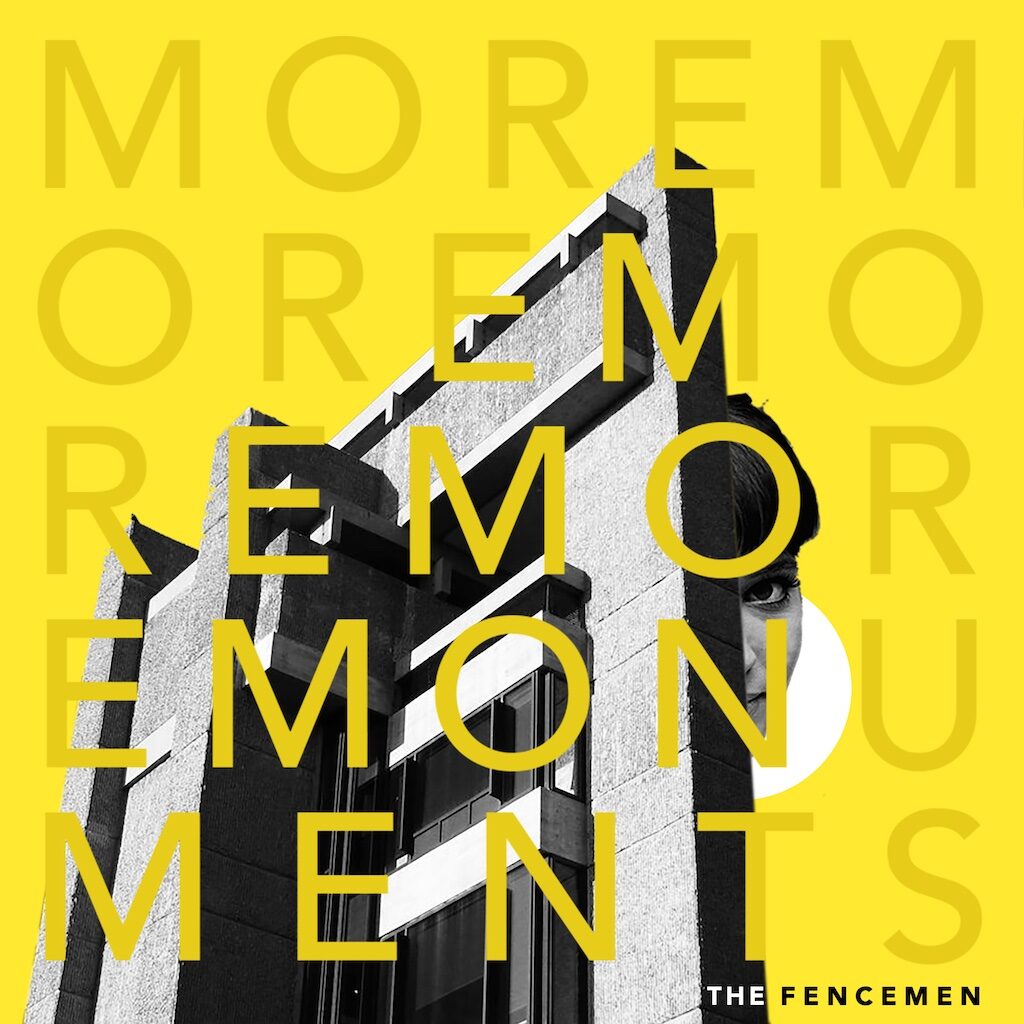The Fencemen’s More More More More Monuments EP is now available to stream on the usual outlets and is also available for purchase via iTunes. Recorded in 2013, it’s not new music per se, but this is the first time it’s been made public.
Regular readers may recall that I contributed some sounds to “Rented Rooms” on The Fencemen’s debut album Times Are Alright. I joined the band shortly after the album’s completion, playing on all songs during live shows. I remain thankful that they allowed and welcomed me into the circle, both musically and personally. The band eventually ended but the friendships remained.
While very little of that live material was captured, I did participate in the writing and recording process for what ultimately became More More More More Monuments, a mostly hard-driving collection of songs that built upon the gritty, catchy aesthetic of Times Are Alright. The EP’s songs, title, and recording were set in 2013 but it was never released. An unmastered copy of the 2013 mix has been in my library under the title The Lost EP ever since. I’ve regularly listened to it, wishing others would one day get a chance to hear it. The time has finally come.
I’m proud of both what we created as well as having played a small role in it. On a specific and personal musical note, I was glad that it captured, on some level, a bit of my preferred approach to the “rock sax” conundrum—to be more of a second guitarist than an alternate melodic voice that just occasionally solos (in an often stylistically jarring way). (More on that here and here.) I’m also glad that my wife could contribute some added sonic texture, playing viola on “O Golden Spike.”
Curiously, regarding the saxophone itself, despite the songs being nearly a decade old, the EP is out at an interesting time, as the saxophone has gradually been seeping back into indie, pop, and dance music in recent years. Monuments is a fitting complement to such a trend, even if it was recorded well before it.
All that said, the circumstances surrounding the EP’s completion and release are unfortunate. Tyler Blakslee, The Fencemen’s lead singer, lyricist, and general creative force, tragically and unexpectedly passed away a couple of weeks ago. (A touching tribute by Sean Hoen is here.) Getting this mastered and released is a tribute to him. He and Dan Jaquint (drums, engineering) continued working on the EP over the years, including very recently, and Dan moved mountains to quickly push it over the finish line amidst the grief.
Not only did Dan just “get it done,” but this final mastered mix sounds wholly different—in the best way—from the old mix I’ve been listening to for ~9 years. It’s aggressive and alive. I love it.
This past spring marked a decade since I officially met and befriended Tyler. (We met once socially a couple years prior, but the 2012 (re-)introduction sealed the deal.) We were fast friends and, although our interests weren’t always aligned, we shared an intense passion for what we liked and could appreciate such when hearing one another rave about this or that cultural artifact. I knew that any time I saw Tyler I would need to bring my conversational A-game and be ready to volley myriad niche references back and forth. We had many great times and made some wonderful memories over the years.
Regarding the Monuments EP specifically, I vividly remember one writing and brainstorming session Tyler and I had at my house—just the two of us in my office sketching out ideas for what would become the song “Rackets.” That evening was emblematic of much of our relationship. We started out by discussing his ideas and working to establish a direction to realize what he heard in his mind’s ear. When I sketched out some skeletal sounds on my horn and (quite old) keyboard, he was clearly displeased with the lack of effects and varied sounds at my immediate disposal. (His attention to detail was always 110%, part of what kept Monuments in the dark for so long.) I kept telling him it’d work on guitar or bass or whatever, but he was skeptical. (He was eventually satisfied when he heard the others playing off those same ideas at a rehearsal.) Ultimately we made progress creatively and he felt like we accomplished something. Afterward we spent some time just listening to music and talking and laughing about this or that movie, show, or book.
More More More More Monuments may have sentimental value for me, but I think it’s a powerful creative statement in and of itself. It’s also a monument to our friend.
